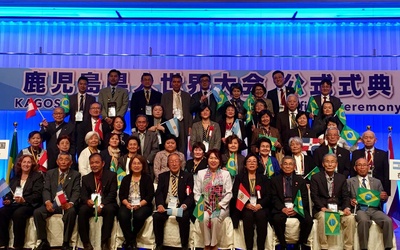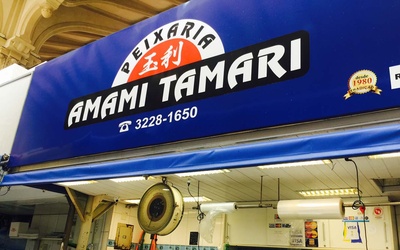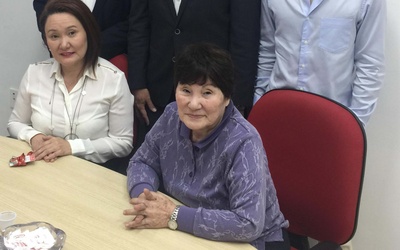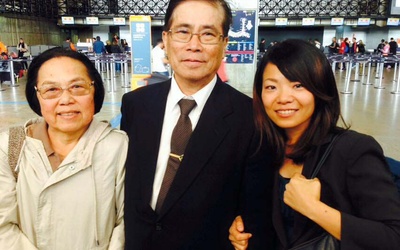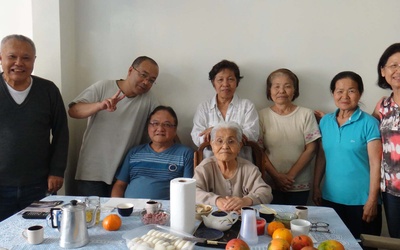
Saori Kato
@katosaoriBorn in Yokohama, Kanagawa Prefecture. A second-generation Amami native whose mother is from Kakeroma Island in the Amami Islands. Since 2009, he has worked as an exhibition guide at the JICA Yokohama Overseas Migration Museum, and developed an interest in migration history. In March 2014, he completed his master's degree at the Kanagawa University Graduate School of History and Folklore Studies. From 2015, he studied abroad at the University of São Paulo in Brazil for one year. He is currently enrolled in a doctoral program at Kanagawa University Graduate School. He is conducting research on the theme of Amami migration.
(Updated January 2019)
Stories from This Author
6th Second and Third Generation Visiting Group to Amami
March 11, 2019 • Saori Kato
On November 1, 2018, the "Kagoshima Prefecture World Convention" was held in Kagoshima, and overseas residents with ties to Kagoshima (approximately 280 people from 20 countries and regions) visited Kagoshima. A delegation of 27 people from Brazil came to Japan to participate in this convention, and 18 of them had ties to Amami. Why did so many of the Brazilian delegations have ties to Amami? The purpose of the visit of the delegation, who are Brazilians with ties to Amami, …
Part 5: Shigehiro Tamari (from Uken Village, Amami Oshima) opens a fish shop with the sign saying "AMAMI"
March 4, 2019 • Saori Kato
Besides the Brajiru Bridge in Uken Village, Amami Oshima, there are other things that tell the history of Brazilian Amami immigrants. The Amami Hall, built in 1955 by people from Amami living in São Paulo, was unfortunately transferred to another Japanese organization in 2002, but the word "AMAMI" still remains in its name. The word "AMANI" can also be seen on the sign of a fish shop in the São Paulo Municipal Market. The fish shop is run by Shigehiro …
Vol. 4: The Brazilian Bridge that Connects Memories and Bonds - Kazuko Fumioka (from Uken Village)
Feb. 25, 2019 • Saori Kato
"You know the Hakukoku Bridge in Uken Village? That was built by my father," says Kazuko Fumioka (74). "Before, it was a wooden bridge, but it would always get washed away during typhoons, so it's now a drum bridge. It was always getting washed away, so my father built it. The people of Yuwan 1 (a native of the village who lives in Brazil) collected donations and asked for them to be used in the village. It was money they …
Vol. 3: Kochia youth takes on the challenge of agriculture - Hideki Higo (from Kasari, Amami City)
Feb. 18, 2019 • Saori Kato
Emigration to Brazil was mainly done in family units, but some people went to Brazil alone. After the defeat, many demobilized soldiers and repatriates returned home. The country was still in turmoil after the defeat and had no capacity to accept them. There were many unemployed people and serious food shortages. Hopes were once again placed on overseas migration as a solution. In 1953, the first postwar immigrants to Brazil arrived in Rio de Janeiro, and people began to cross …
Part 2: A dance teacher over 60 years old - Shizue Shimada (from Uken Village)
Feb. 11, 2019 • Saori Kato
According to the "Uken Village Journal: Natural History" published in November 2017, the first immigrants to Brazil were 13 families and 54 people from Uken Village on Amami Oshima Island in Kagoshima Prefecture, who traveled to Brazil on the Sanuki Maru from Nagasaki Port in September 1918. After that, 81 families and 491 people went to Brazil before and after the war, making Uken Village the "Brazilian immigrant village" that produced the most immigrants to Brazil in Amami. Shimada Shizue, …
Part 1: Vivid memories of Otaka - Tsunehisa Atsushi (from Naze)
Feb. 4, 2019 • Saori Kato
In 1908, Japanese people began to migrate en masse to Brazil. Ten years later, in 1918, people from Amami, Kagoshima Prefecture also began to migrate to Brazil. 2018 marks the 100th anniversary of this. On February 25, 2018, at the Amami City Learning and Welfare Festival held at the Amami Cultural Center, I held an "Amami Brazil Emigrants Discussion Session" to introduce people who migrated from Amami to Brazil, and displayed video interviews and panels of people from Amami who …

